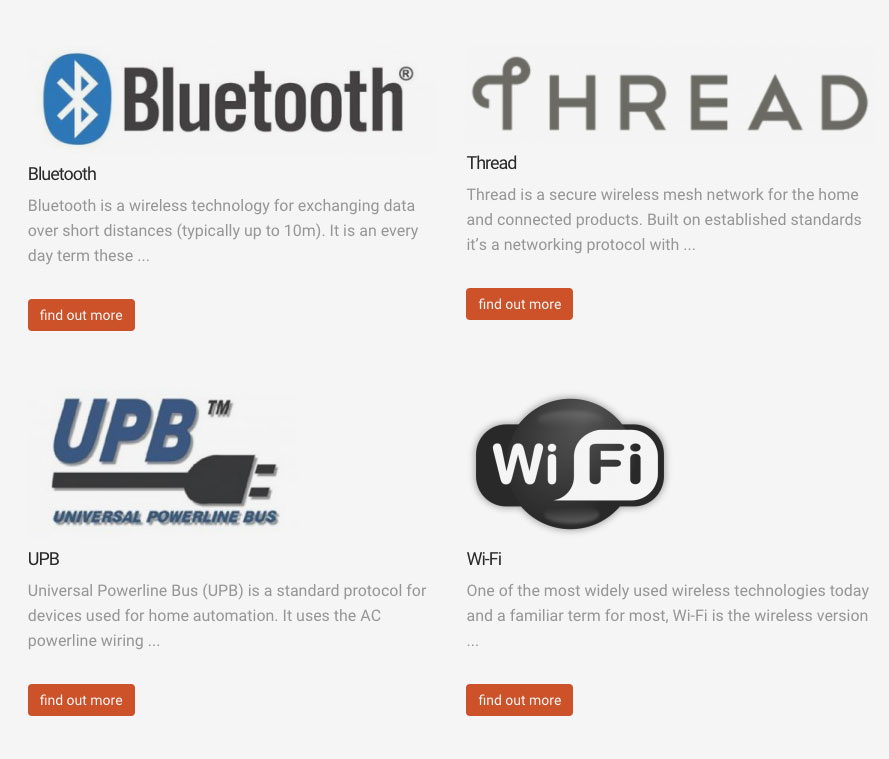There are many communication technologies connecting the Internet of Things behind the scenes. Here we take a look at some of the higher level application and network protocols available for the IoT, and explore their strengths and limitations. Traditionally Wi-Fi, for example, makes sense for products with plenty of power and memory, like a fridge or dishwasher, but not for devices that are small and low-powered, like a smart door lock. Factors such as range, security, power demands and battery life will dictate the choice of which of the IoT protocols is best for an application or product.
Bluetooth and Wi-Fi are now in everyday vocabulary, but other technologies are less well known such as Google’s emerging network protocol Thread, making its attempt to become the industry standard. Z-Wave and Zigbee are relatively new application protocols, but well known amongst home automation enthusiasts. Older home automation protocols like X10 and UPB, although dated and less likely to shape the future of IoT, are included here for completeness.













